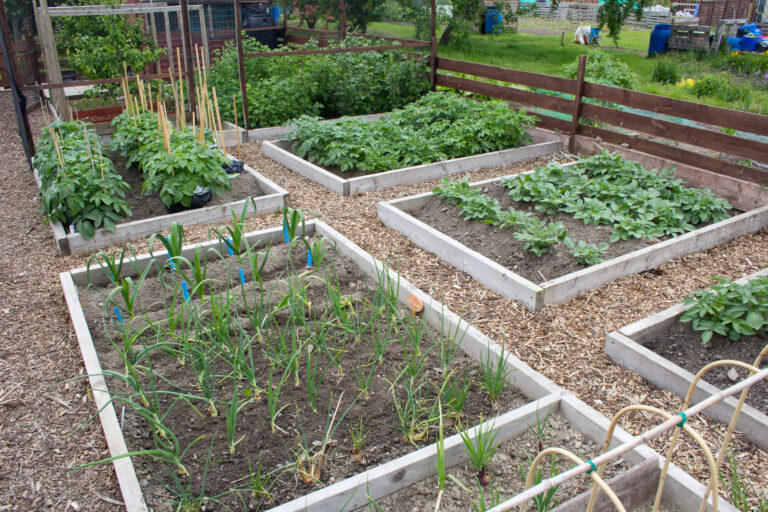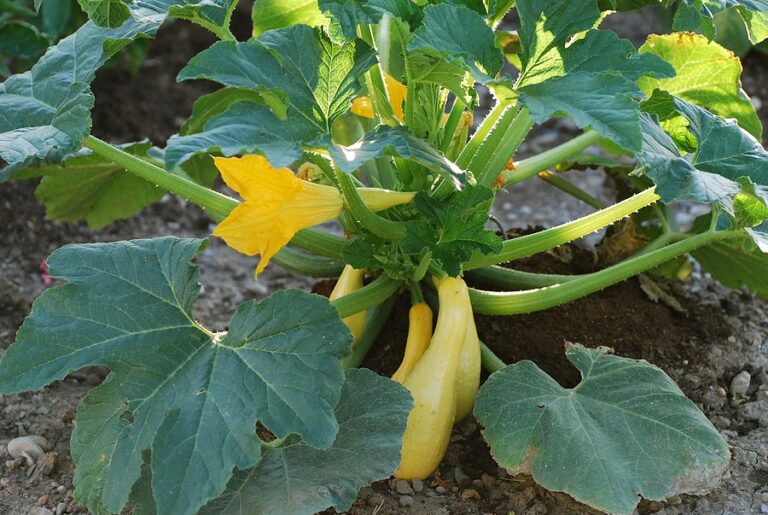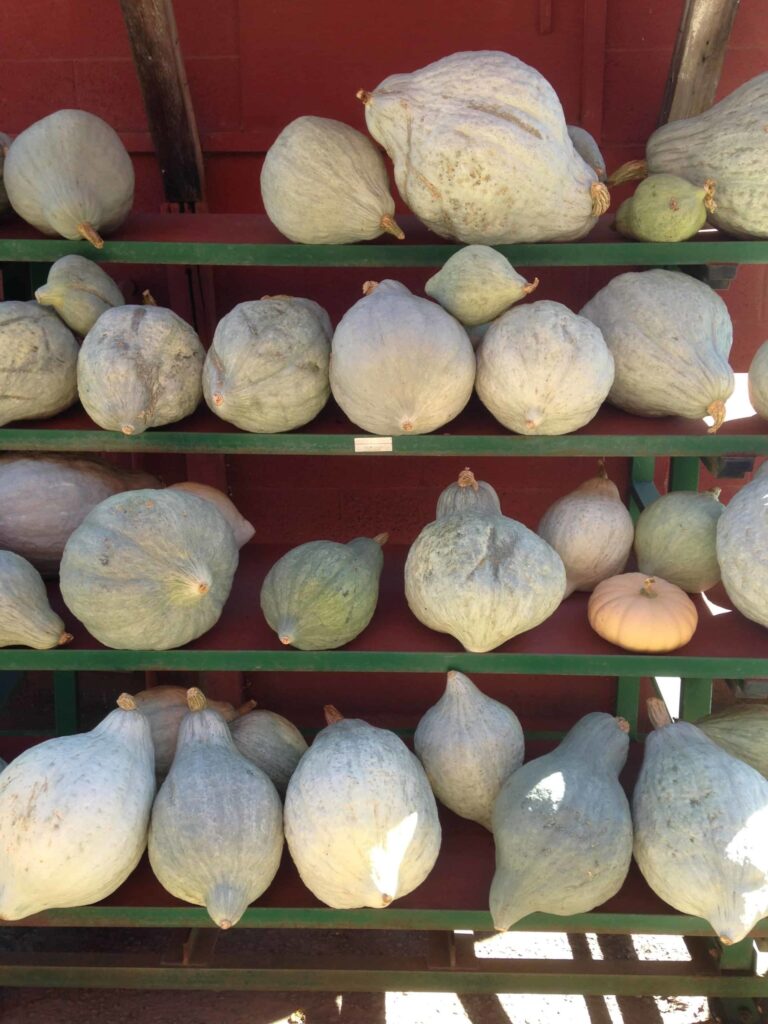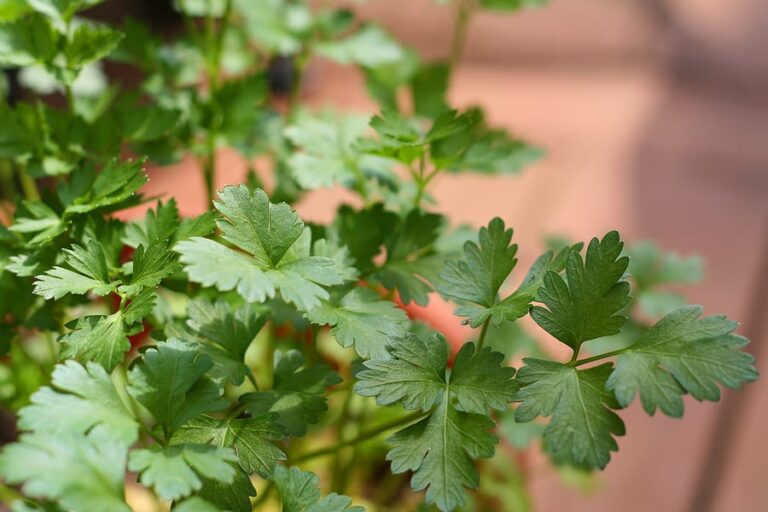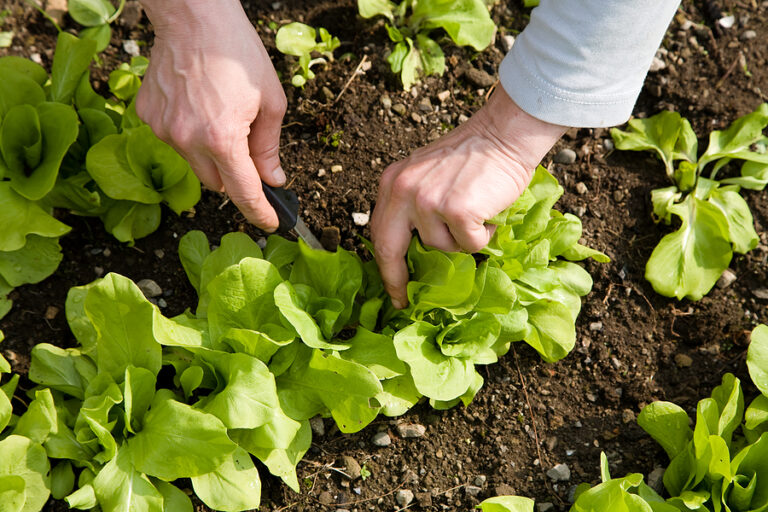How to Ripen Tomatoes
Standard-sized tomatoes take 20 to 30 days from blossom set to reach full size–commonly called “mature green”; they take another 20 to 30 days to ripen, that is begin to change color. A tomato can be picked when it begins to change color–from green to red, pink, yellow, or orange depending upon the cultivar.
The optimal temperature range for tomato ripening is 68°F to 77°F (20-25°C); tomato ripening is slowed when temperatures are cooler or warmer than the optimum range. Tomatoes stop ripening when temperatures are less than 55°F (13°C)and greater than 85°F (29°C). Once a mature green tomato has begun to blush or turn color, it can be brought to full color or full ripeness off the vine at room temperature–70°F to 75°F (21-24°C). A tomato will be equally flavorful and brought to full ripeness on or off the vine–once it has moved beyond “mature green” to color change.
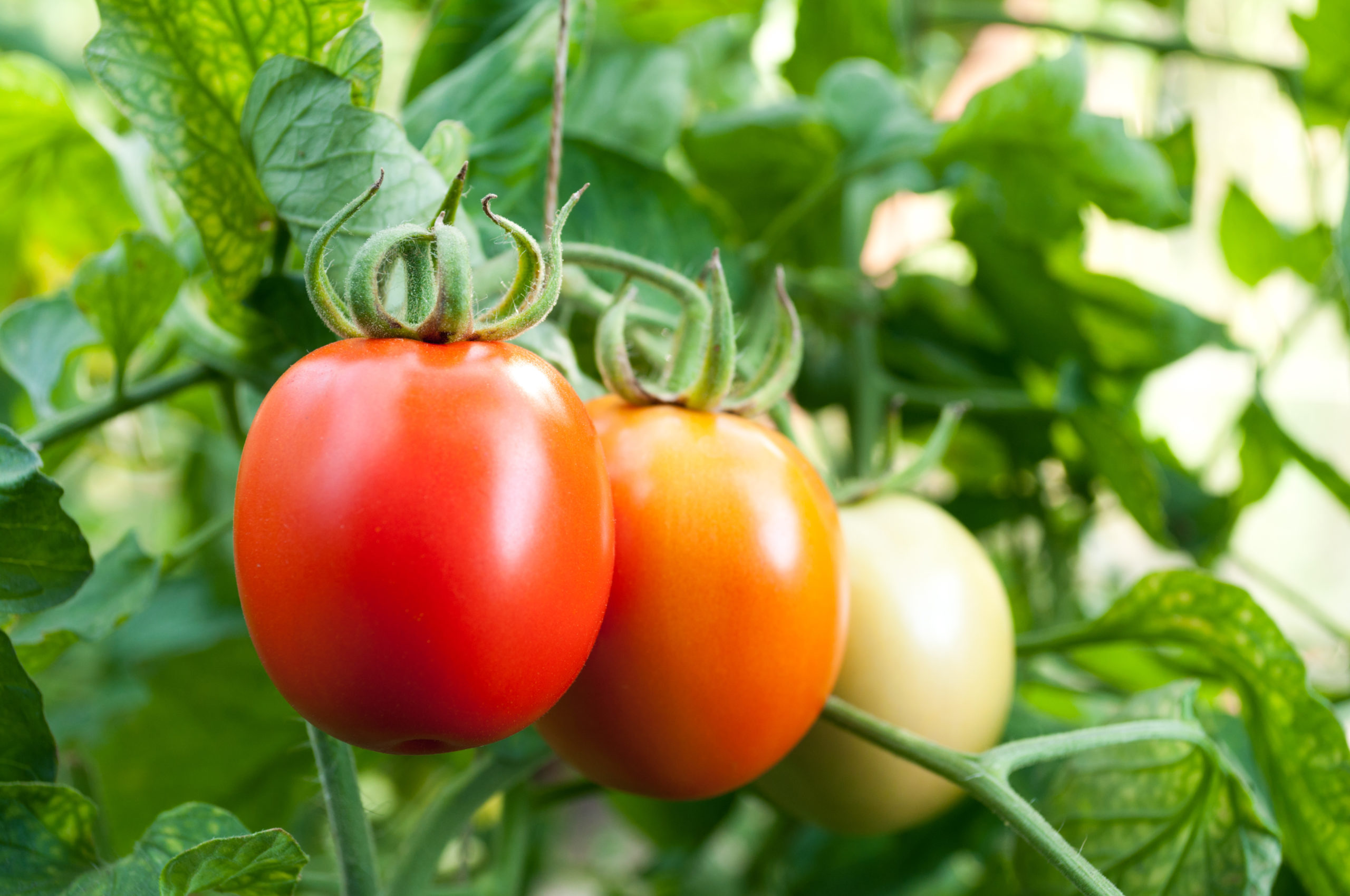
Estimated days to maturity, fruit size, and color can be used to estimate the harvest time for your tomato crop. Temperatures outside the optimum range can delay harvest. Tomatoes can not be forced to maturity more quickly than nature will allow. However, there are ways to expedite the tomato harvest when temperatures are right.
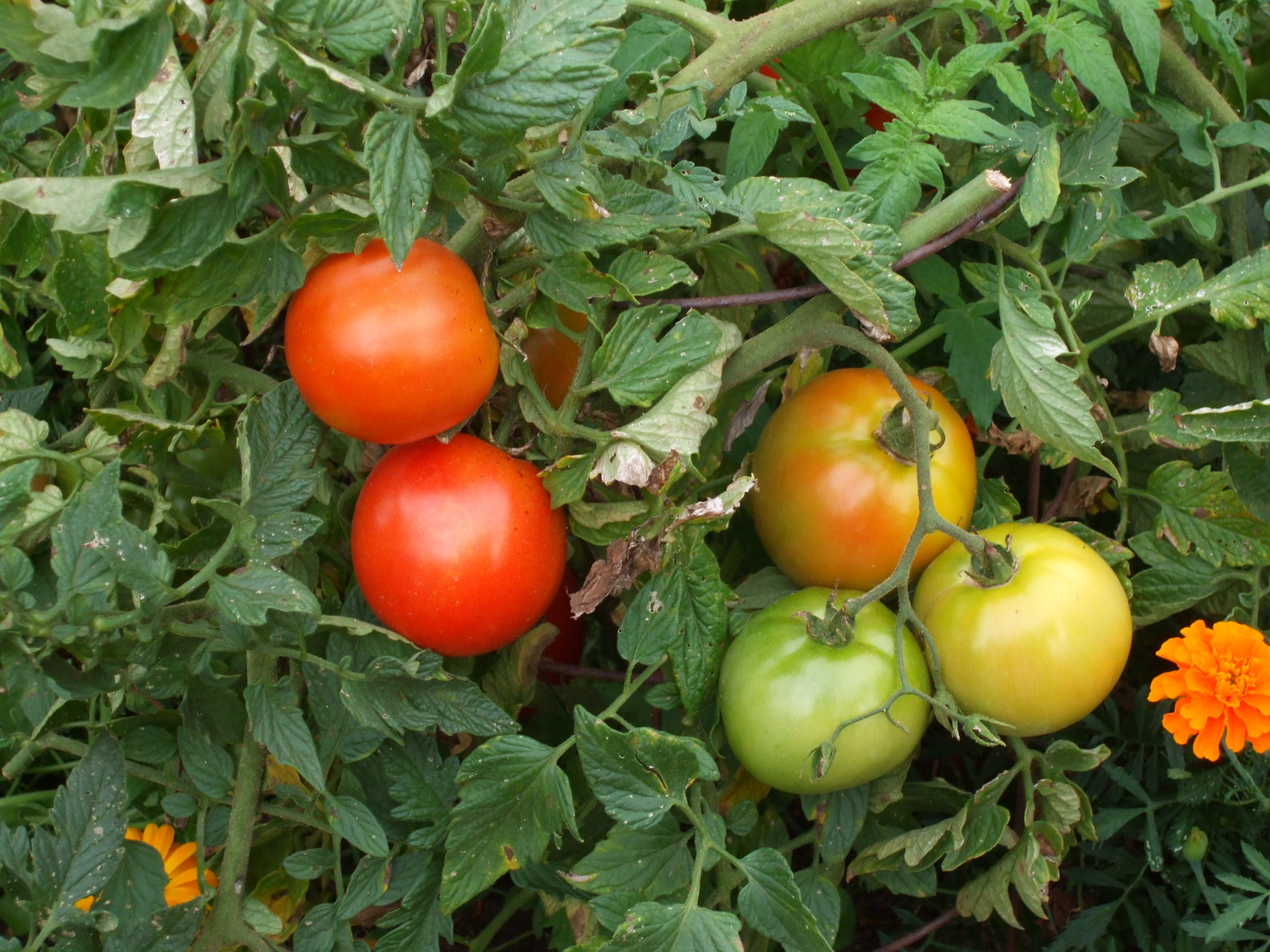
How to know a tomato is ripe
Tomatoes ripen from the inside out. To know a tomato is ripe let the skin turn red (if the variety is a red one) and you will know the fruit is ripe. (If the variety you planted is supposed to be green at harvest, you must keep track of the days from transplanting to know the harvest time.)
Tomato ripening and temperature
A red tomato will not turn red when temperatures are greater than 86°F. If the summer is very hot where you live, leaving fruit on the vine may cause them to look yellowish-orange rather than red. The red pigment won’t form if temperatures exceed 85°F. If the weather is very hot, it’s better to pick at the pink stage and let the tomato ripen indoors in cooler temperatures.

Ways to speed tomato ripening on the vine
Once tomatoes on the plant begin to reach the mature green, here’s how you can quicken the overall ripening of fruit on the vine:
Harvest daily
Pick fruit as soon as it starts to show color; this will allow other fruit on the vine to gain size and come to harvest more quickly. Tomato fruit picked at the first sign of color can be ripened at room temperature. Fruit ripened off the vine will be just as tasty as those left to mature on the vine. Cut or gently twist off fruits supporting the vine at the same time. Don’t leave overripe fruits on the vine; they decrease productivity and may spread disease.
Remove flower clusters
Pluck new flower clusters from tomato plants that have already set fruit. Removing flowers will direct the plant’s energy into ripening the fruit already maturing on the vine. Remove flower clusters no later than a month before the first expected frost to ensure the fruit on the plant makes it to harvest without frost or cold damage.
Remove small or excess fruit
Pick small or excess fruit off of the tomato plant. Removing immature fruit or fruit you will not use will allow the plant to divert energy into ripening larger, already maturing fruit. Tomatoes that reach “mature green” size and have their first blush of color can be ripened off the vine at room temperature.
Remove some leaves
Pinch away suckers and lower leaves. Tomato plants almost continuously produce new shoots–called suckers–between the main stem and lateral branches. Pinch or prune away this new growth so that the plant can channel its energy into producing and ripening fruit rather than producing new leaves. Leaves just above fruit or fruit clusters should be left in place to protect the fruit from sunburn. Leaves low on the plant that turns yellow or brown or diseased leaves should be removed. These leaves are taking energy away from fruit ripening.
Reduce water and food late in the season
Reduce water and fertilizer to encourage “mature green” fruits to ripen. Fertilizer–especially excess nitrogen–encourages new leaf growth at the expense of fruit growth and maturation. (Use fertilizer low in nitrogen 4-8-4 for tomatoes.) Reducing water as fruits reach mature size will enhance ripening (and concentrate flavor) and direct the plant’s energy away from new fruit set to ripening fruit already on the vine
Stress roots near season end
Shifting or rotating plant roots by twisting gently at the crown of the plant will disturb the distribution of nutrients and moisture from roots to fruit and foliage causing the plant to finish fruit growth, ripen, and go to seed.
Protect plants from extreme temperatures
Shield plants from temperatures outside the optimum range; wrap cages with clear plastic or frost blankets to protect plants from temperatures below 60°F (16°C); drape shade cloth over frames to protect tomatoes from the harsh sun and temperatures greater than 90°F (32°C). Temperature extremes will slow and even halt fruit maturation and ripening. If fruits have begun to turn color, pick them and finish ripening indoors at temperatures between 70°F and 75°F (21-24°C).
Mulch with plastic sheeting
Use silver- or red-colored plastic sheeting or aluminum foil to speed growth where temperatures are low or days are overcast. The light reflected from colored plastic or foil stimulates the movement of carbohydrates into developing fruit resulting in early plant ripening by a week or more. Place a colored tarp under plants or secure the tarp to posts and stretch the tarp along the north side of the tomato bed or row.
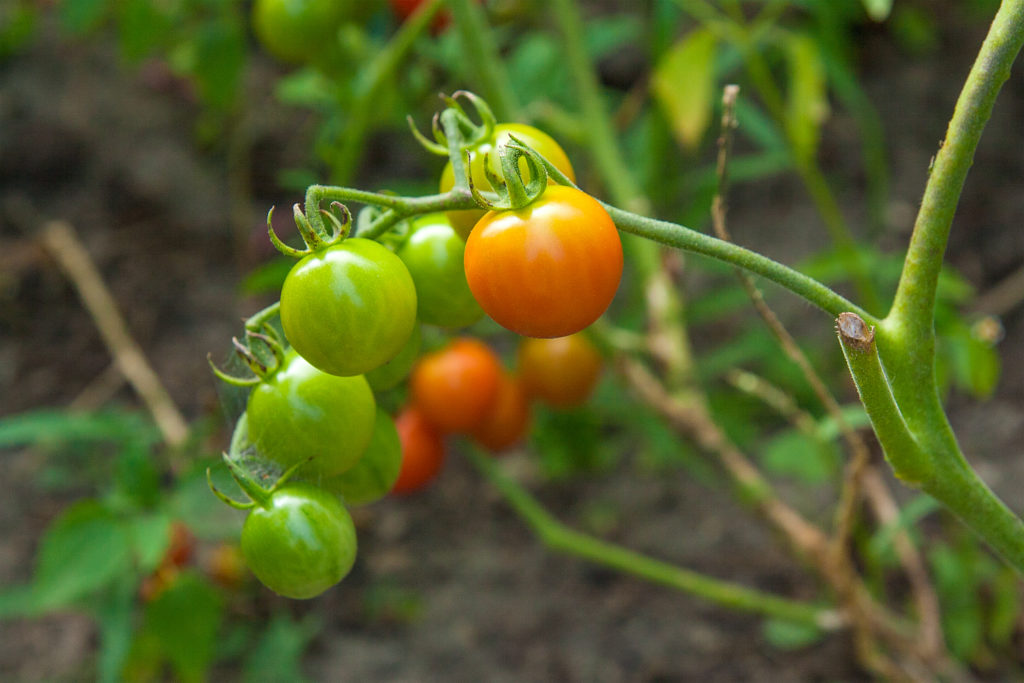
How to ripen tomatoes in short-season regions
In regions where tomatoes are consistently slow to ripen, here are general tips to speed up the harvest every year:
Grow early to mature varieties
Grow tomato varieties that require a shorter period of optimum temperatures. Quick-to-harvest tomato varieties that require 55 to 70 days from transplanting may be best suited for regions where temperatures do not stay in the optimum range long enough to ripen fruit.
Plant earlier
Start tomato plants indoors and begin to harden off plants four to five weeks before the last frost. Move seedlings into the garden about three weeks before the last frost date. Set them into the ground an inch or so deeper than they were in their cartons and water them in. Place cloches or tomato cages wrapped in plastic around these transplants and protect them from low temperatures until night temperatures are consistently greater than 55°F (13°C).
Keep plants warm
Where nights are cold, place self-standing sleeves or water around plants or flank young plants with flat tiles that hold the sun’s heat during the day and radiate it at night. Plant tomatoes near a wall or the side of a building that faces west or south. The wall will soak up the sun’s heat during the day and radiate it back out at night.
Stake or cage plants
Support tomato vines with a stake or cage. Grow plants up exposing the fruit to sun and air.
Ensure pollination
On warm, calm days give flower clusters a little shake to aid pollination. Cool, wet weather or hot windy days can inhibit pollination. Blossom drop happens when flowers are not pollinated; where pollination does not happen, the fruit will not follow.

Ways to ripen tomatoes off the vine
Tomatoes will ripen off the vine, but the flavor will not be as intense as those left to ripen on the vine:
- Tomatoes do not need light to ripen once they are off the vine. Do not put picked tomatoes in a sunny window to ripen—they will only overheat or burn and ripen unevenly before they redden and spoil. Put picked tomatoes in a dark place away from a window where the temperatures are 65 to 70°F.
- You can redden up tomatoes off the vine by placing them in a paper bag with an apple or banana. Ethylene gas given off by the fruit will speed the tomato ripening process.
- You can also let unripe tomatoes sit in a cool, dark place and they will ripen to color—but again the flavor will not be as intense as vine-ripened tomatoes.
- Do not store partially ripened tomatoes in the refrigerator. Very cool temperatures will stop the ripening process. Allow picked tomatoes to ripen shoulders up in a dark place at room temperature.
- Fully ripened tomatoes keep their best flavor when they are stored at room temperature, but they will last only a day or two. If you need to keep them longer than that and they are small enough, put them into the butter compartment of the refrigerator–the warmest part.
- When picked at the peak of ripeness, canned or frozen tomatoes retain their flavor and nutrients better than almost any other vegetable.
- About a month before you expect the first frost, start plucking all new flowers off of your tomato plant. That will direct the plant’s energy into ripening the tomatoes that are already on the vine instead of producing new ones that won’t have time to mature.
- If you have an abundance of green tomatoes at the end of the season, you can wrap each one separately in a newspaper and then place them loosely in a single layer in a cardboard box so they don’t squash each other. Keep them in a cool, dry place until they ripen.
- If you have unripened cherry tomatoes on the vine when the frost comes, you can cut off an entire truss and hang it in the kitchen or garage until the fruit ripens and is ready for harvest.
Tomato Growing Hub
Start here: The Ultimate Tomato Growing Guide: From Seed to Harvest
Growing Tips
- Getting Started with Tomatoes: A Gardener’s Guide to Success
- How to Choose a Tomato for Your Garden
- Growing Early-Season Tomatoes for Great Taste
- Heirloom and Hybrid Tomatoes
Planting Tips
- Tomato Seed Starting Tips
- Mastering Tomato Seed Starting: How to Grow Strong and Healthy Plants Indoors
- When to Plant Tomatoes: A Gardener’s Guide to Timing and Success
- Plant Tomatoes for a Thriving Crop: Sun, Soil, and Spacing
- How to Transplant Tomato Seedlings: A Gardener’s Guide
- Growing Tomatoes in Containers
Tomato Care
- Watering and Feeding Tomatoes: Expert Tips for a Healthy, Productive Crop
- Best Ways to Support Your Tomato Plants
- Pinching and Pruning Tomatoes: A Gardener’s Guide to Healthier, More Productive Plants
- How to Prune Tomatoes
- Grow Tomatoes on Stakes
- Best Companion Plants for Thriving Tomatoes: What Works & What to Avoid
Pest & Disease Control
- Tomato Growing Problems: Pests, Diseases, and Solutions
- How to Prevent Blossom Drop — Tomatoes and Peppers
- How to Identify Early Blight, Late Blight, and Leaf Spot on Tomatoes
Harvest & Preparation
- When and How to Harvest Tomatoes for the Best Flavor
- How to Ripen Tomatoes
- Planting Tomatoes for a Long Harvest
- Planting Tomatoes for a Fall Harvest: How to Grow Fresh Tomatoes Before Frost
- Tomato Flavor Explained
- Nine Ways to Cook and Serve Tomatoes
Garden Planning Books at Amazon:
- Tomato Grower’s Answer Book
- Vegetable Garden Almanac & Planner
- Kitchen Garden Grower’s Guide Vegetable Encyclopedia
- Vegetable Garden Grower’s Guide
Books to help you grow:



